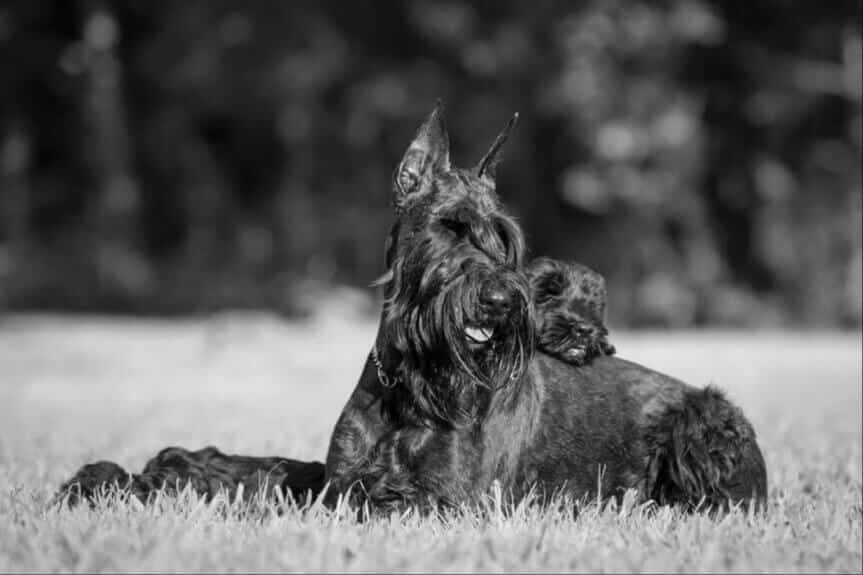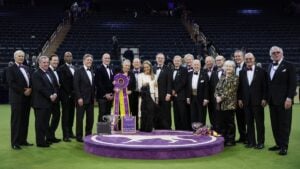
Monty the Giant Schnauzer Wins Best in Show at the 149th Annual Westminster Kennel Club Dog Show
Monty, the Giant Schnauzer from Ocean City, NJ, wins Best in Show at the 149th Westminster Kennel Club Dog Show under Judge Paula Nykiel.
Home » Meet The Breeds » Giant Schnauzer

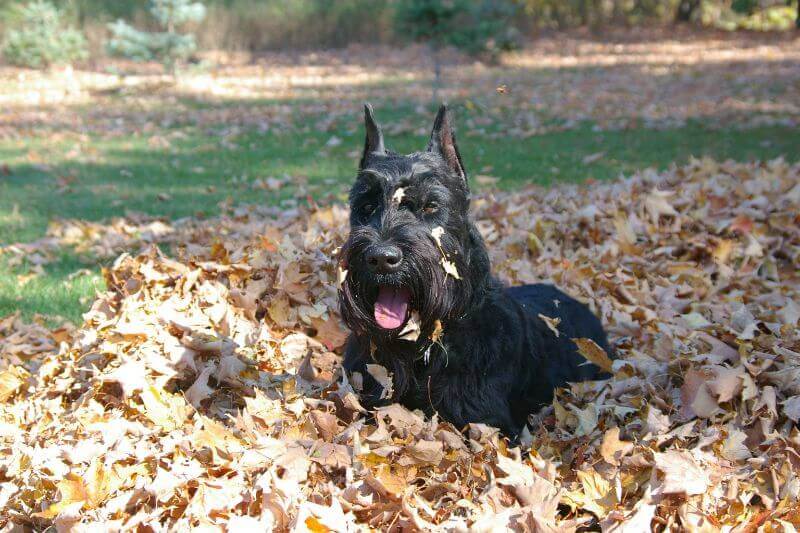
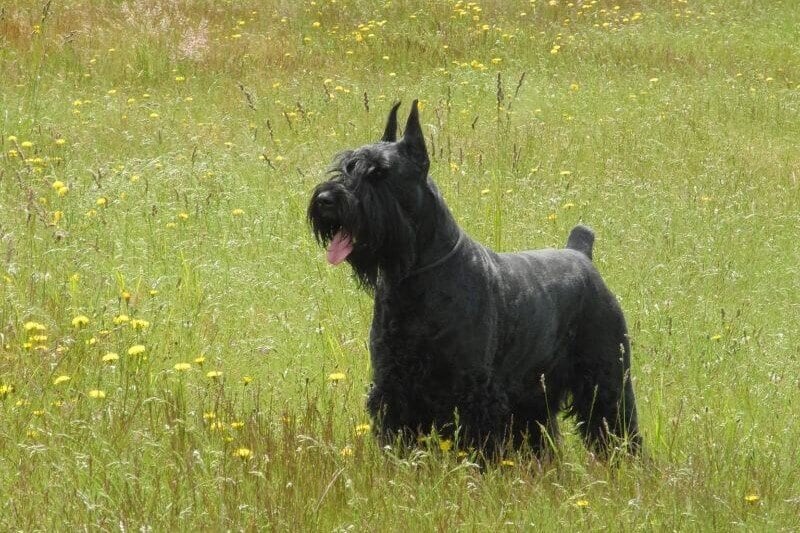
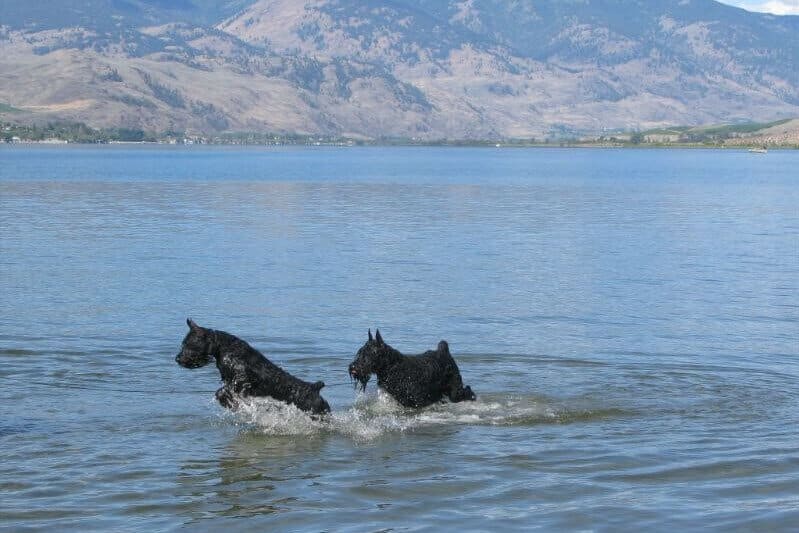
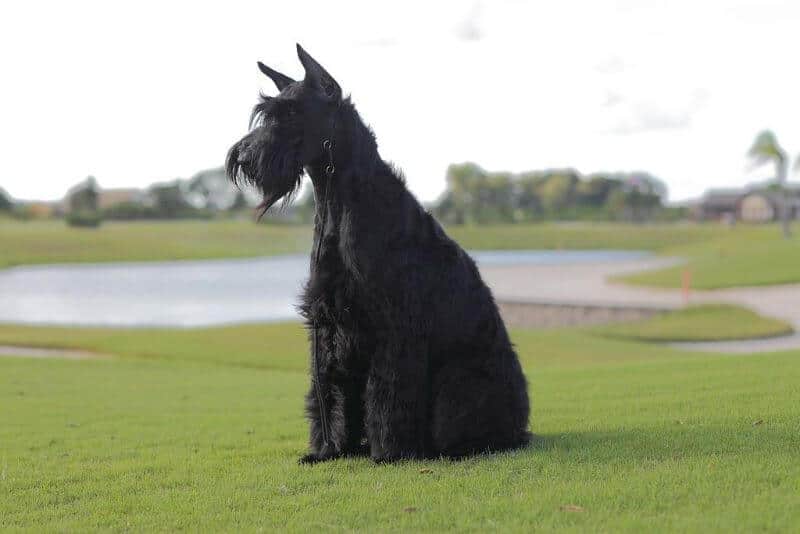
The Giant Schnauzer is a large, powerful working breed known for its intelligence, loyalty, and versatility. Originally developed in Germany, this breed has served as a farm dog, cattle herder, and later, as a guard and police dog, showcasing its adaptability and strong work ethic.
Working
23.5 – 27.5 inches
55 – 95 pounds
10 – 13 years
| Country of Origin | Germany |
|---|---|
| Bred For | Cattle Driving, Police & Army Service Dog, Guarding |
| Known For | Commanding Figure, Harsh Beard & Eyebrows, Trainability |
| Popularity | Moderate |
| Temperament | Alert, Loyal, Trainable |
| Activities | Guarding, Police Dog, Search and Rescue, Conformation Shows, Dog Sports |
The Giant Schnauzer originated in the Bavarian region of Germany in the 17th century, where it was initially bred as a multipurpose farm dog. Farmers needed a powerful and intelligent dog to drive livestock, protect property, and assist with other demanding tasks on large farms. The breed is a larger version of the Standard Schnauzer, with whom it shares much of its ancestry.
The Giant was developed by crossing the Standard Schnauzer with larger breeds such as the Great Dane, Bouvier des Flandres, and likely other herding and working breeds. This selective breeding resulted in a dog with the strength and size needed for cattle herding, coupled with the intelligence and loyalty of the familiar schnauzer.
By the late 19th century, the Giant Schnauzer began transitioning from a farm dog to a guard dog and protector. Its imposing size, keen intelligence, and natural protective instincts made it a favored breed for guarding breweries, stockyards, and other businesses in urban areas of Germany. During World War I, the breed’s abilities were further recognized, and the breed was used as a military and police dog.
The Giant Schnauzer was officially recognized as a distinct breed by the German Kennel Club (Deutscher Hundestammbuch) in 1925. The American Kennel Club (AKC) granted full recognition to the breed in 1930, placing it in the Working Group. Despite its versatility and capabilities, the Giant has always been a relatively unknown breed outside its native Germany.
The Giant Schnauzer is a large and more powerful version of the Standard Schnauzer, presenting a bold and valiant figure of a dog. Nearly square in proportion, the Giant is a robust, strongly built, and well muscled dog with a courageous and commanding presence.
Adult Giant Schnauzer males typically stand 25.5 to 27.5 inches tall at the shoulder and weigh 60 to 85 pounds. Mature females generally stand from 23.5 to 25.5 inches tall and weigh 55 to 75 pounds.
The Giant Schnauzer has a square, well-balanced build, with the length of the body approximately equal to the height at the withers. Its sturdy, muscular frame exudes power and endurance, emphasizing the breed’s working heritage and versatility.
Texture: The coat of the Giant Schnauzer is hard, wiry, and very dense. It consists of a harsh outer coat and a soft undercoat. The coat stands slightly off the back, providing protection in all types of weather, and the hallmark beard and eyebrows offer both protection and a bit of drama.
| Standard Color | |
|---|---|
| Black | y |
| Pepper & Salt | y |
| Black & Tan | y |
| Fawn | y |
A Note About Color: The Giant Schnauzer is either a solid black or a pepper and salt-colored dog. Black dogs are pure black, with only a small white spot on the chest allowed. Pepper and salt dogs have a banded outer coat (white with black, and black with white) and some black hairs, appearing gray from a distance. All shades are acceptable. A dark facial mask harmonizes with the body coat and emphasizes the expression. The coat of the eyebrows, whiskers, cheeks, throat, chest, legs, and under the tail is lighter in color but nevertheless “peppered.”
The traditionally docked tail of the Giant Schnauzer is set moderately high and carried high when the dog is excited. When natural, the tail is moderately long and carried in a sabre or sickle shape.
The Giant Schnauzer is a bold and intelligent breed, but it requires commitment and understanding from its owner or handler. As a large, active working dog, the Giant thrives in environments that provide plenty of mental and physical stimulation. It’s essential, therefore, to consider the dog’s needs for space, exercise, and training before bringing home one of these watchful and courageous canines.
The Giant Schnauzer is a generally healthy breed, with a lifespan of 10 to 13 years. However, like all dogs, individuals may be prone to certain health issues. But with proper care and regular veterinary check-ups, this dog can lead a long and healthy life.
The following health concerns are more commonly observed in Giant Schnauzers:
The Giant Schnauzer is an intelligent, loyal, and assertive breed with a strong work ethic. These dogs are well-suited for experienced owners who can provide consistent training and leadership. While highly affectionate with their families, they can be reserved or cautious around strangers, making them excellent guard dogs. Giants typically get along well with other dogs if properly socialized from an early age, but their assertive nature may require careful introductions to unfamiliar dogs.
This breed is generally good with older children, thanks to their protective and watchful nature, but their size and energy may be overwhelming for very young kids. Giants form deep bonds with their human companions and thrive in active households where they can be part of daily activities and are not left alone for extended periods.
Feeding a Giant Schnauzer requires careful attention to the dog’s size, age, and activity level. Puppies need high-quality, breed-appropriate puppy food formulated for large breeds to support their rapid growth. Dividing meals into three to four smaller portions per day can help to prevent overfeeding and reduce the risk of bloat.
Adult Giants require a balanced diet to maintain their energy and muscle mass. On average, they can consume between three and four cups of dry food daily, divided into two meals. However, the exact amount will vary based on activity level, metabolism, and individual needs. Providing fresh water at all times is essential, and regular consultations with a veterinarian can ensure that all nutritional requirements are being met.
Training a Giant Schnauzer can be both rewarding and challenging due to the breed’s intelligence and independent nature. These dogs are quick learners but require consistent and positive reinforcement to stay engaged. Early socialization is critical to developing a well-rounded dog, as their natural protective instincts can lead to wariness around strangers if not properly managed.
This breed thrives in structured training environments and excels in advanced Obedience, Agility, and other performance sports. Giants tend to bark to alert their families to any perceived threat, so teaching them controlled barking can help to manage this tendency. Their high intelligence means they can sometimes outsmart inexperienced handlers, so consistent boundaries and mental stimulation are crucial to prevent undesirable behaviors like stubbornness or willfulness.
The Giant Schnauzer is a high-energy breed that requires daily physical and mental exercise to stay happy and healthy. These dogs thrive on activities that challenge both their bodies and minds, such as long walks, jogging, or playing fetch. As a working breed, they excel in canine sports like Agility and Obedience Trials, and even Herding, which can be excellent outlets for releasing pent-up mental and physical energy.
| Energy Level | High |
|---|---|
| Exercise Requirements | 2 Hours/Day (Minimum), Daily Walks, Vigorous Running, Regular Exercise, Mental Stimulation |
Without sufficient exercise, a Giant may become bored and potentially develop destructive behaviors. A minimum of one to two hours of vigorous exercise per day is ideal for meeting the needs of this breed. These dogs are best suited for active families or individuals who can include them in outdoor activities and provide plenty of opportunities to explore and play.
The wiry, weather-resistant coat of the Giant Schnauzer requires regular grooming to maintain its hard texture and elegant appearance. Brushing at least once or twice a week helps to remove loose hairs and prevent tangles. The iconic beard may need more frequent attention to keep it clean, especially after meals or outdoor play.
| Coat Type | Hard, Wiry, Very Dense |
|---|---|
| Grooming Requirements | Weekly Brushing, Hand-Stripping, Occasional Bathing, Routine Ear Cleaning, Periodic Nail Trimming, Regular Tooth Brushing |
Giants require periodic hand-stripping or clipping to maintain the coat’s characteristic harsh texture. Professional grooming every few months is often recommended for pet owners unfamiliar with the process. While these dogs are not heavy shedders, regular grooming helps to minimize any shedding and keeps the coat in good condition. Attention should also be given to ear cleaning, nail trimming, and dental care as part of an overall grooming routine.
The Giant Schnauzer is best suited for homes with ample space to accommodate the breed’s size and energy level. While these dogs can sometimes adapt to apartment living, they need frequent outdoor exercise and mental stimulation to prevent boredom. A securely fenced yard is preferred for providing a safe outdoor space to play and explore.
Giant Schnauzers are well-suited for cooler climates due to its dense, weather-resistant coat, but it can also tolerate warmer weather with proper care and hydration. These dogs form strong bonds with their families and do not do well when left alone for extended periods. They thrive in households where they can be active participants in daily life, enjoying both physical activities and close companionship.
Giant Schnauzer puppies are energetic and curious, and full of personality. Due to their size, intelligence, and active nature, they require dedicated care, early socialization, and consistent training to grow into well-mannered and confident adults.
Caring for a Giant Schnauzer puppy involves meeting its physical, mental, and emotional needs. Proper nutrition is critical during the growth phase. The puppy should be fed high-quality, large-breed puppy food, divided into three to four meals a day to support steady growth and reduce the risk of bloat. Fresh water should always be available.
Socialization is a vital part of raising a Giant puppy. Exposure to a variety of people, environments, and animals encourages confidence. Basic obedience training should start early, as the breed’s inherent intelligence and assertiveness can lead to stubborn behaviors without proper guidance. Using positive reinforcement methods, such as treats, praise, and play, will support any interaction.
Exercise is important, but it should be age-appropriate. Over-exercising a growing puppy can strain developing joints, so short, controlled play sessions and gentle walks are best. Additionally, providing safe chew toys and interactive games helps to channel excess energy and keeps the pup mentally stimulated.
Regular veterinary visits for early vaccinations, health check-ups, and advice on growth and development are essential during the puppy stage. Receiving support from the puppy’s breeder is also essential, as is establishing a consistent routine for feeding, training, and playtime. These routines will set a solid foundation for a healthy and happy Giant Schnauzer.
The Giant Schnauzer is recognized by the world’s leading registries and kennel organizations, which categorize the breed into a specific Group based on its unique characteristics. This breed is recognized worldwide under the following Group designations:
| Organization | Group Designation |
|---|---|
| AKC (American Kennel Club) | Working |
| UKC (United Kennel Club) | Guardian |
| CKC (Canadian Kennel Club) | Working |
| ANKC (Australian National Kennel Council) | Utility |
| RKC (The Royal Kennel Club) | Working |
| FCI (Fédération Cynologique Internationale) | Group 2: Pinscher and Schnauzer Molossoid Breeds – Swiss Mountain and Cattle Dogs; Section 1: Pinscher and Schnauzer Type |
The ideal Giant Schnauzer is described by a Breed Standard that is approved by each of the world’s leading registries and kennel organizations. The Breed Standards for this breed may be found in the following links:
| Organization | Breed Standard |
|---|---|
| American Kennel Club | AKC Giant Schnauzer Breed Standard |
| United Kennel Club | UKC Giant Schnauzer Breed Standard |
| Canadian Kennel Club | CKC Giant Schnauzer Breed Standard |
| Australian National Kennel Council | ANKC Giant Schnauzer Breed Standard |
| The Royal Kennel Club | RKC Giant Schnauzer Breed Standard |
| Fédération Cynologique Internationale | FCI Giant Schnauzer Breed Standard |
Yes, Giant Schnauzers do shed, but their wiry coat tends to shed minimally compared to other breeds. Regular grooming, including brushing, helps to control shedding and maintains the coat’s weather-resistant texture.
While no dog is completely hypoallergenic, Giant Schnauzers may be considered a good choice for allergy sufferers because they shed less and produce less dander. However, individual reactions can vary, so it’s important to spend time around the breed before deciding if it’s the best choice as a companion.
Giant Schnauzers have a typical lifespan of 10 to 13 years. With proper care, including regular exercise and a healthy diet, they can enjoy a long and active life.
Yes, Giant Schnauzers can make excellent family dogs due to their loyalty and protective nature. However, their size and energy levels require an active household and consistent training.
Giant Schnauzers are naturally alert and tend to bark to warn their families of potential intruders or unfamiliar sounds. With proper training, most barking can be controlled to encourage reliable, but not out of control, vocalizations.

Monty, the Giant Schnauzer from Ocean City, NJ, wins Best in Show at the 149th Westminster Kennel Club Dog Show under Judge Paula Nykiel.
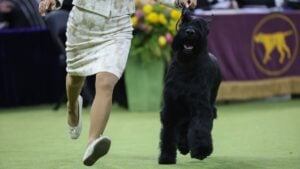
Ocean City’s Giant Schnauzer, Monty, wins the Working Group at the 149th Westminster Kennel Club Dog Show under judge Dr. Nikša Lemo.

From pet-store pup to Westminster Best in Show, Hearthmore Giant Schnauzers celebrates a journey of passion, purpose, and legacy.

Patricia Poole is the breeder behind Twilight Giant Schnauzers. Read about the kennel’s beginnings, champion dogs, puppies, photos & more!
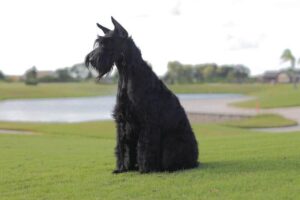
Robin Henderson is the breeder behind SpiceRack Giant Schnauzers. Read about the kennel’s beginnings, champion dogs, puppies, photos & more!
The best way to ensure a long and happy relationship with a purebred dog is to purchase one from a responsible breeder. Not sure where to begin?
Contact the National Parent Club’s Breeder Referral Program, which is listed on the AKC Breeder Referral Contacts page.
